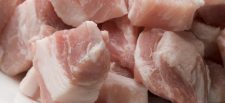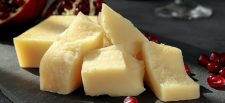Global dairy cooperative Arla Foods has released its full year results for 2024, labelling it a “strong year”.
Arla reported group revenue of €13.8 billion, down from the 2023 revenue of €13.7 billion. It achieved a net profit of €401 million.
Performance price increased to 50.9 EUR-cent/kg, marking the second-highest level in Arla’s history and reflecting “strong market demand and effective cost management”. As a consequence, Arla proposed a supplementary payment of 2.2 EUR-cent/kg milk delivered, which it said marked the highest dividends paid to the farmer owners in the company’s history.
In 2024, Arla cut its Scope 1 and 2 emissions by 4% to achieve a 37% reduction from 2015 levels.
Peter Tuborgh, CEO of Arla Foods, said: “I am delighted that Arla Foods is performing well, and we see a high demand for dairy and our products in particular across the globe. The highest ever supplementary payment, along with a highly competitive milk price, reflects Arla’s financial strength.”
UK shows “strong” branded growth
This was a year of “strong performance” in the UK for branded growth, said Arla. Branded revenue increased by €103 million (£89 million) with total branded growth at 7.6%. This was largely driven by the Arla® brand at over 10% and Lurpak® at 7.5%. Arla said its Protein brand grew by 28.6%, with Arla Skyr increasing by 21.5% in a “particularly strong” year for Arla’s yogurt brands.
Arla’s UK foodservice division also saw “strong volume growth” at over 22%, with strategic branded revenue growth finishing the year at over 17%.
Bas Padberg, managing director of Arla Foods UK, commented: “2024 was clearly a year of strong branded growth, which really highlights the power of the portfolio and product mix we have, as shoppers look for quality, nutritious and tasty products.
“As a cooperative, everything we do is to drive the best possible returns for our owners, so through strong collaboration and the support of the farmers, our customers and the whole business, means we can give back to our farmers for the hard work they do in producing our food and investing for the future of the dairy industry.”
Global tensions “fuel market volatility”
Arla said that the “high levels of geopolitical turbulence from previous years persisted in 2024”, with conflicts such as the war in Ukraine and tensions in the Middle East. These ‘crises’, in addition to their “dire humanitarian impacts”, were said by Arla to have “fuelled market volatility and uncertainty, disrupted global logistics, and highlighted the vulnerabilities in international supply chains”.
Tuborgh stated: “In an unpredictable world, maintaining food production is paramount, Governments that have not yet prioritised a comprehensive strategy for food security must ensure that it’s in place going forward. Ensuring robust local food systems is not just a matter of economic stability, but a fundamental responsibility to safeguard our communities in times of uncertainty.”
Outlook for 2025
Arla said that “geopolitical turbulence is expected to persist” in 2025, requiring “careful navigation” while leveraging Arla’s “cooperative strength and local food production facilities”.
Consumer purchasing power is anticipated to remain stable in 2025, following improvements in 2024 due to lower inflation and higher wages. However, Arla said that dairy demand is expected to be influenced by consumer reactions to elevated dairy prices and ongoing geopolitical uncertainties.
The global dairy supply, which “lagged behind demand” in 2024, is anticipated to adjust to the higher price levels, potentially increasing supply in 2025. Nonetheless, political uncertainties, particularly those related to sustainability in core markets, may continue to pose challenges.
Arla projects its 2025 revenue to range between EUR 14.5-15.3 billion, driven by the high dairy price level, with profit share within the target of 2.8% to 3.2%. However, it said the high price levels, combined with consumer uncertainty, are expected to pressure branded volume-driven revenue growth, projected at -2.0% to -1.0%. Arla said this range is subject to the balance of supply and demand dynamics throughout the year.









